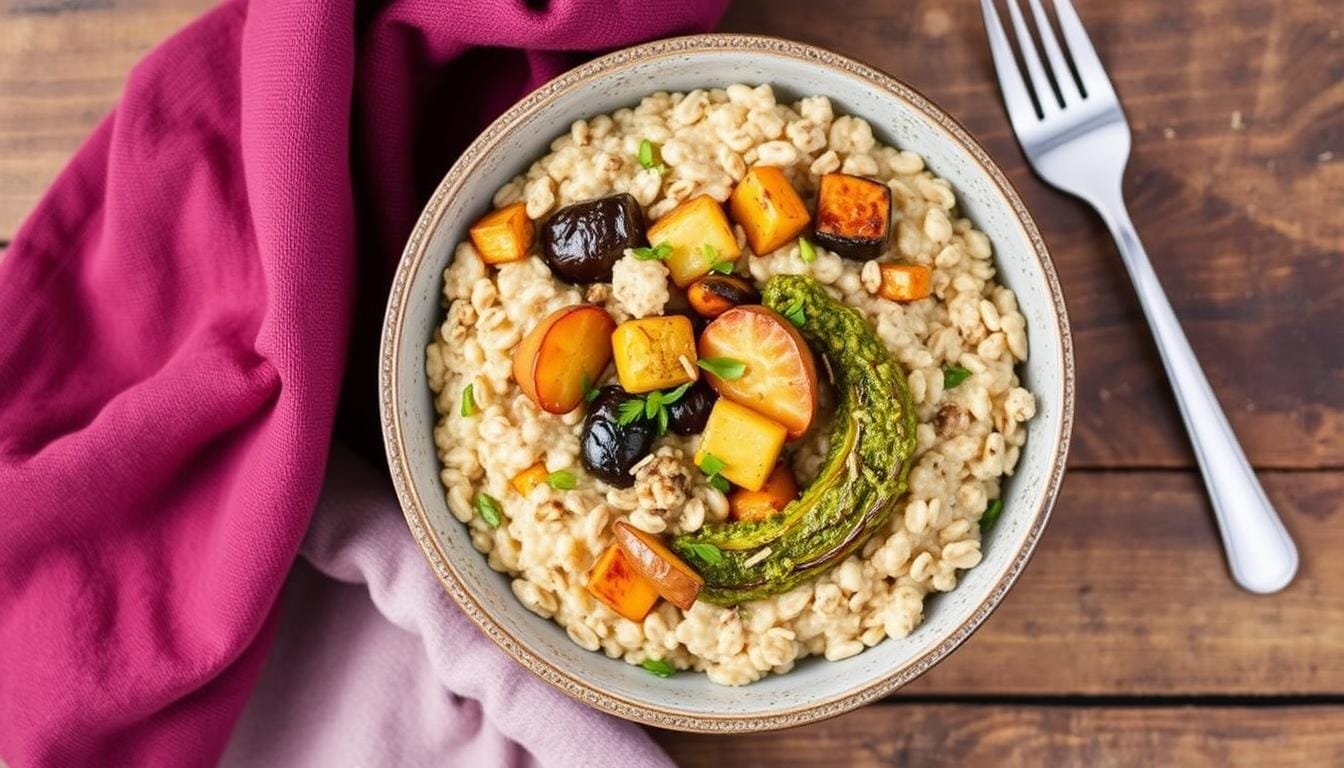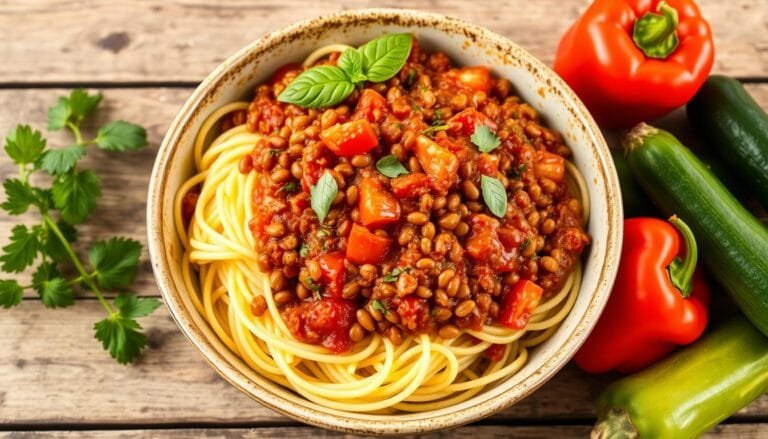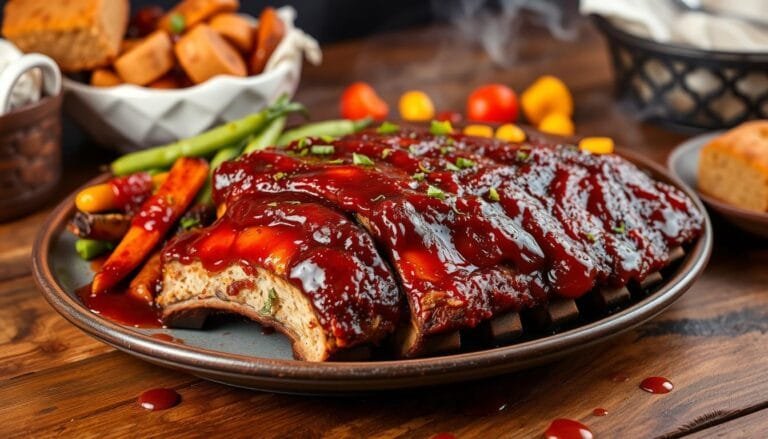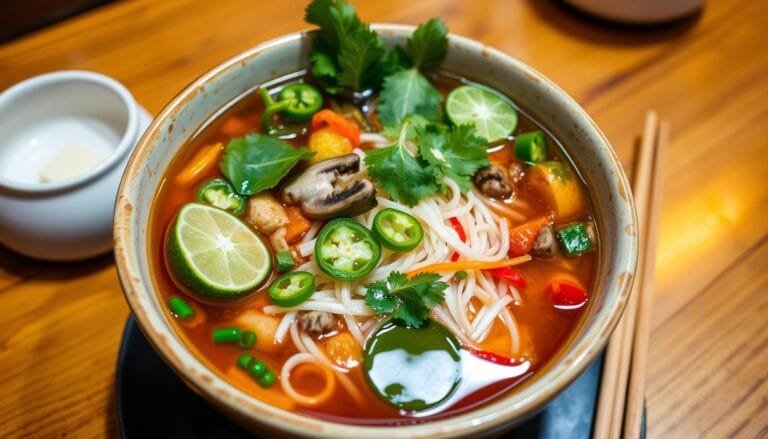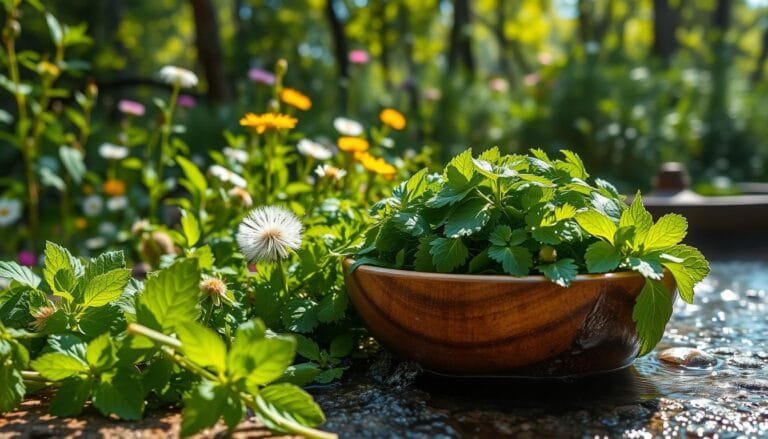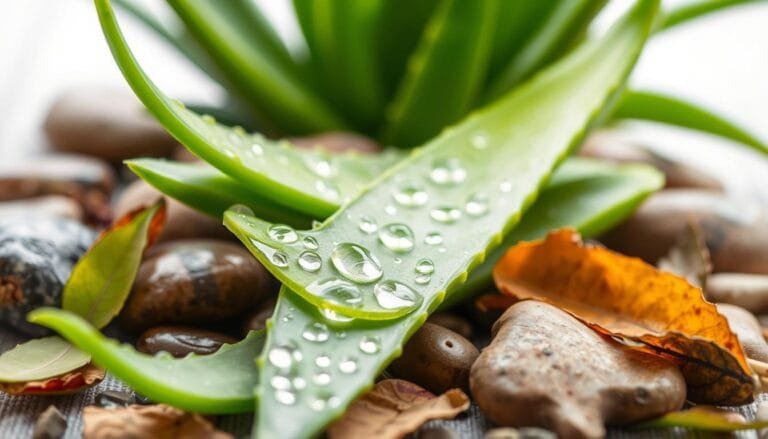I love cooking at home and have found that whole grains are amazing. They are full of nutrients like vitamins, minerals, and fiber. These are key for a healthy diet. This guide will help you start cooking with whole grains easily.
Whole grains like quinoa, farro, bulgur, and brown rice are all different. Each has its own taste and way of cooking. In this guide, I’ll teach you about these grains, how to cook them, and how to use them in your meals. You’ll learn to make your meals healthier and tastier.
Let’s start our journey into whole grain cooking. We’ll make dishes that are both delicious and good for you. You’ll feel full of energy and inspired to cook more.
Understanding the Benefits of Whole Grains for Your Health
Adding whole grains to your meals can greatly improve your health. They are full of fiber, vitamins, minerals, and antioxidants. These nutrients help lower the risk of chronic diseases and boost your overall health.
Nutritional Value and Disease Prevention
Eating whole grains can lower your risk of heart disease, type 2 diabetes, and some cancers. Research shows that eating three 1-ounce servings of whole grains daily can cut heart disease risk by 22%. Those who eat the most whole grains have a 47% lower heart disease risk than those who eat the least.
Whole grains also reduce stroke risk by 14% and overall cardiovascular disease by 21%. Their fiber and nutrients help keep cholesterol, blood pressure, and insulin levels healthy. This helps prevent many diseases.
Digestive Health and Blood Sugar Control
The fiber in whole grains is key for good digestion. It helps prevent constipation and diverticular disease by making stool soft and bulky. It also keeps the intestines from getting too much pressure.
The fiber and complex carbs in whole grains help control blood sugar. This is good for people with or at risk of type 2 diabetes.
Weight Management Benefits
Whole grains can also help with weight management. Eating three servings of whole grains a day can lower BMI and belly fat. Switching from refined to whole grains and eating at least two servings daily can also lower type 2 diabetes risk.
The fiber and nutrients in whole grains make you feel full. This helps prevent overeating and supports weight control.
“Each 1-ounce (28-gram) serving of whole grains is linked to a 5% lower risk of premature death.”
The evidence is clear: whole grains are good for your health. Switching to whole grains can help prevent chronic diseases. It supports a healthier, more vibrant life.
Essential Types of Whole Grains for Beginners
Starting your whole grain journey is exciting. It’s key to know the many whole grains out there. Each one has its own taste, texture, and health benefits. Let’s explore the must-try whole grains for beginners.
Brown rice is a favorite for its nutty flavor and health perks. It’s full of fiber, vitamins, and minerals. Quinoa is another hit, being gluten-free and rich in protein, iron, and antioxidants. Oats are great for breakfast and baking, thanks to their heart-healthy benefits.
Barley and bulgur offer unique tastes. Barley, an oldest cultivated grain, has a chewy texture and nutty flavor. Bulgur cooks fast and has more fiber than many grains.
Want to try something new? Check out gluten-free grains like amaranth, buckwheat, millet, and sorghum. These ancient grains have different nutritional profiles, like amaranth’s high protein and buckwheat’s antioxidants.
Feeling bold? Try ancient grains like farro, freekeh, and teff. They have unique flavors, textures, and history, adding excitement to your meals.
Starting with whole grains opens up a world of flavors and health benefits. Experiment with different grains and cooking methods. Find your favorites and enjoy making healthy, tasty meals.
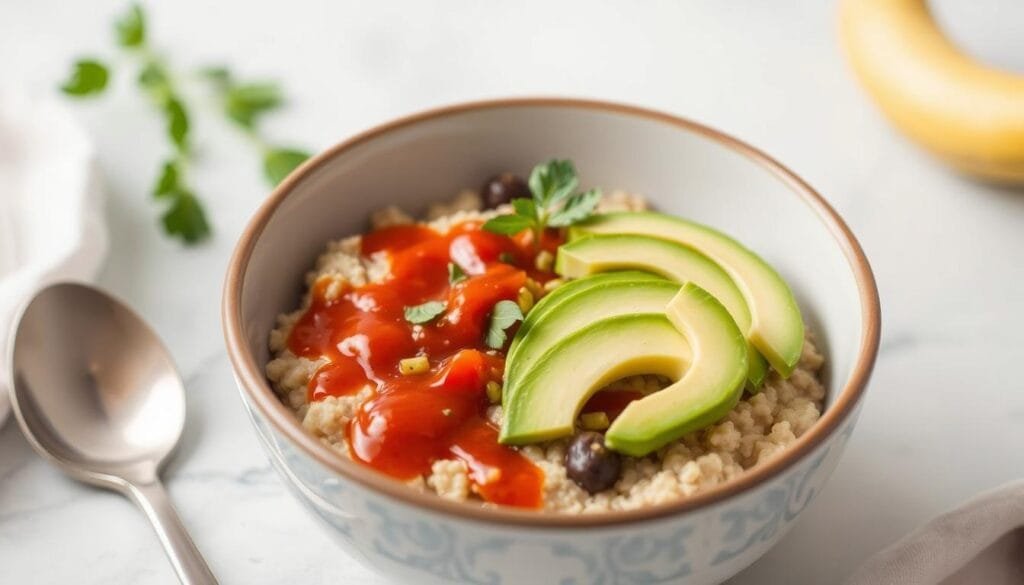
Basic Equipment and Tools for Cooking with Whole Grains
Cooking with whole grains needs a well-stocked kitchen. You’ll need sturdy pots, rice cookers, and precise measuring tools. The right gear makes a big difference in cooking perfect, tasty whole grain dishes. Check out the key kitchen equipment, storage containers, and cooking vessels for whole grain cooking.
Must-Have Kitchen Equipment
Start with a reliable pot or rice cooker for cooking grains. A fine-mesh strainer is great for rinsing grains. Don’t forget measuring cups and spoons for accurate ingredient amounts.
For baking, you’ll need mixing bowls, baking sheets, and a food processor.
Storage Containers and Measuring Tools
Good airtight storage containers keep whole grains fresh. Glass jars or BPA-free plastic containers with tight lids are best. Use measuring tools like stainless steel cups and spoons for the right grain-to-water ratio.
Cooking Vessels and Utensils
A heavy-bottomed saucepan or Dutch oven is great for simmering grains. For baking, use glass baking dishes to avoid health risks from aluminum. Essential cooking utensils include a silicone spatula, wooden spoons, and a digital thermometer.
With the right kitchen tools, storage solutions, and cooking tools, you’ll cook whole grains with ease and confidence.
Cooking with Whole Grains: Fundamental Techniques
Mastering the basics of cooking with whole grains is essential. Techniques like boiling and absorption each have their own benefits. They can make your dishes taste better and feel more satisfying.
Toasting grains before cooking is a must. It makes them smell and taste nutty. Try toasting quinoa, amaranth, and barley in a skillet or oven. This step releases their oils and brings out their flavors.
Soaking grains overnight is another key technique. It shortens cooking time and makes them easier to digest. Grains like oats, teff, and buckwheat benefit a lot from this step.
- For boiling, use a 2:1 water or broth to grain ratio. Boil the liquid, add the grains, then simmer until they’re tender.
- The absorption method uses less liquid. Let the grains cook until they’ve soaked up all the liquid. This works well for brown rice, farro, and barley.
Choose the right cooking method for each grain. Cooking times vary, from 10 minutes for quinoa to an hour for wheat berries. Experiment and adjust to get the perfect taste and texture.
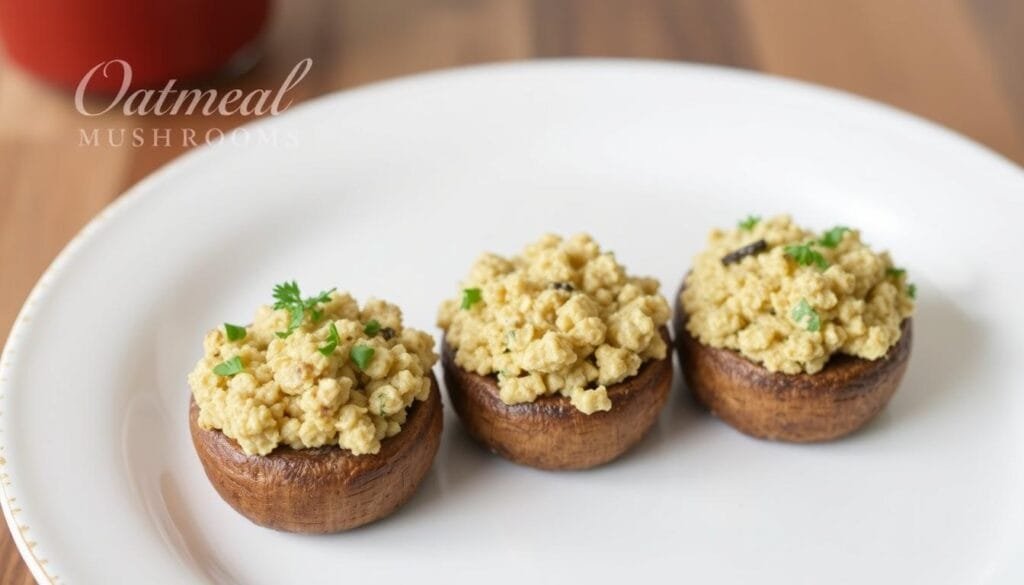
“Cooking with whole grains is a delicious way to incorporate more nutrient-dense foods into your diet. With a little practice, you’ll be whipping up flavorful, satisfying meals in no time.”
Water-to-Grain Ratios and Cooking Times
Cooking whole grains is easy, but getting the right water ratio and cooking time is key. This ensures perfect texture and flavor. The ratio and time needed vary with each grain type.
Quick-Cooking Grains Guide
Some grains, like bulgur and couscous, cook fast. Bulgur needs just 5 minutes of simmering or 20 minutes after adding boiling water. It uses a 1:2 grain-to-water ratio. Couscous requires a 1:1.5 ratio and only 5 minutes of simmering.
Long-Cooking Grains Guide
On the other hand, grains like wheat berries and brown rice take longer. Wheat berries need a 1:4 ratio and 1.5 to 2 hours of simmering. Brown rice requires a 1:2.5 ratio and 40 to 60 minutes of cooking.
Soaking Requirements
Grains like rye berries and spelt benefit from soaking overnight. This can cut their cooking time by up to an hour.
| Grain | Water Ratio | Cooking Time |
|---|---|---|
| Amaranth | 1 cup grain : 2-1/2 cups water | 25-30 minutes |
| Barley (pearled) | 1 cup grain : 3 cups water | 45-60 minutes |
| Buckwheat (groats) | 1 cup grain : 2 cups water | 20 minutes |
| Bulgur (quick-cooking) | 1 cup grain : 2 cups water | 5 minutes (or 20 minutes standing) |
| Couscous | 1 cup grain : 1-1/2 cups water | 5 minutes |
| Millet | 1 cup grain : 3 cups water | 20-25 minutes |
| Rolled Oats | 1 cup grain : 3 cups water | 10-15 minutes |
| Quinoa | 1 cup grain : 2 cups water | 20 minutes |
| White Rice | 1 cup grain : 2 cups water | 15-20 minutes |
| Brown Rice | 1 cup grain : 2-1/2 cups water | 40-60 minutes |
| Wild Rice | 1 cup grain : 3-1/2 cups water | 60 minutes |
| Wheat Berries | 1 cup grain : 3 cups water | 1.5-2 hours |
Incorporating Whole Grains into Baking
Baking with whole grains is a fun and healthy way to make your treats better. But, you’ll need to make some changes to your recipes. Whole grain flours soak up more liquid, need less mixing, and can’t handle over-mixing.
Begin by adding 10-15% whole grain flour to your recipes. For bread, you can use up to 25% whole grain flour. Muffins, pancakes, and cookies can take up to 50% whole grain flour. It’s important to choose a grain that fits the flavor of your baked goods.
Popular whole grains for baking include wheat, oats, corn, rice, barley, sorghum, and rye. You can also use pseudo-cereals like flax seeds, amaranth, buckwheat, and quinoa. Each grain has its own nutritional benefits and baking qualities, so try different ones to find your favorites.
| Grain | Baking Attributes | Nutritional Profile |
|---|---|---|
| Wheat | Strong gluten development for crusty breads | High in protein, fiber, B vitamins, and minerals |
| Oats | Adds moisture and tender texture to baked goods | Rich in soluble fiber, beta-glucans, and antioxidants |
| Quinoa | Lightweight and fluffy, ideal for muffins and quick breads | Complete plant-based protein with essential amino acids |
Whole grain flours go bad faster than refined flours. Keep them in airtight containers in the freezer or fridge to stay fresh. With a bit of trial and error, you’ll soon be baking tasty and healthy whole grain treats!
Tips for Perfect Grain Texture and Flavor
Cooking with whole grains can be a real game-changer. I’ve learned a few tricks to make my dishes both delicious and satisfying. Achieving the perfect texture and flavor is key.
Common Cooking Mistakes to Avoid
One big mistake is overcooking whole grains. This makes them mushy and unappetizing. To avoid this, follow the recommended cooking times and water-to-grain ratios closely. Letting the grains rest after cooking helps them keep their best texture.
Using too much water is another common mistake. It can make the grain’s flavor weak and the dish watery. Stick to the recommended water-to-grain ratio for best results.
Flavor Enhancement Strategies
- Toast the grains before cooking to amplify their nutty, earthy notes.
- Cook the grains in broth instead of water for added flavor.
- Experiment with different herb and spice combinations to create unique flavor profiles.
- Try mixing different whole grains, like quinoa and bulgur, to balance textures and tastes.
Remember, each whole grain is unique. Pay attention to their individual cooking requirements for the best results. With a little experimentation and attention to detail, you’ll be whipping up perfectly textured and flavorful whole grain dishes in no time.
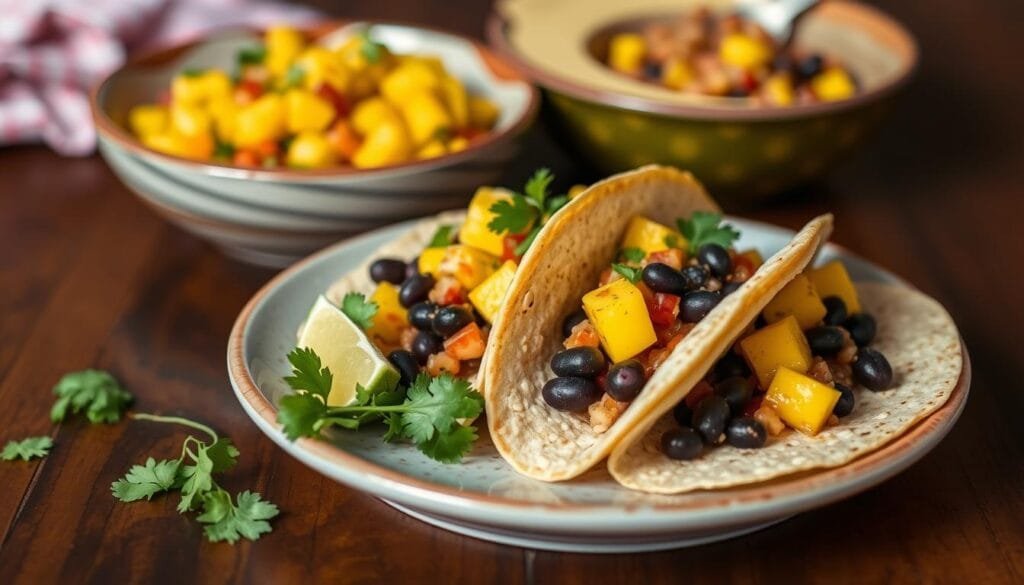
“Cooking with whole grains has been a game-changer for me. Once I learned how to properly cook and season them, my meals became so much more satisfying and delicious.”
Meal Planning with Whole Grains
Adding whole grains to my meal prep has changed the game. They give me lasting energy and key nutrients. Plus, they’re great for making tasty dishes.
I start by cooking a mix of grains like brown rice, quinoa, and lentils at the week’s start. A mix of 1/2 cup of each grain and 1/2 cup of lentils makes a great base for meals.
Having this grain and legume mix ready, I can whip up grain bowls, add them to salads, or use them in soups and stir-fries. People love these whole grain recipes, giving them a 4.16-star rating from 40 votes.
For successful meal prep, the right tools are key. A rice cooker is a must-have for easy grain cooking. It takes about 30 minutes to cook my mix. I can keep it in the fridge for up to a week, ready for quick meals.
Adding whole grains to your diet boosts health and simplifies meal planning. With pre-cooked grains, you can make many tasty, healthy meals all week.

The US Dietary Guidelines say to eat at least half whole grains. So, give whole grains a try and see how they can change your meal prep!
Ancient Grains: Exploring Beyond Basic Options
Looking to mix up your whole grain choices? It’s time to check out ancient grains. These grains are packed with nutrients and offer a wide range of flavors and textures. They can make your cooking and meals more exciting.
Quinoa, amaranth, and millet are some popular ancient grains. Fonio, an African grain, cooks fast and is great for both savory and sweet dishes. Teff, the smallest grain, is creamy when cooked and perfect for porridges and pilafs.
What makes ancient grains special is their unique tastes and high nutritional value. They often have more protein and special nutrients than common grains. Adding them to your meals can bring nutritional diversity and let you try unique grains like our ancestors did.
“Quinoa is a complete protein source containing all nine essential amino acids, making it an ideal choice for boosting protein intake. Brown rice, on the other hand, is highlighted as a fiber-rich alternative to refined grains, supporting digestive health and healthy weight maintenance.”
Start with ancient grains in both savory and sweet dishes. Use quinoa for grain bowls, amaranth for a creamy texture, and teff in baked goods. Fonio is a tasty rice substitute in pilafs and risottos.
The world of ancient grains is vast and full of possibilities. It’s a chance to explore new flavors and improve your health. Your taste buds and body will appreciate it!
Storing and Preserving Whole Grains
Keeping whole grains fresh and full of nutrients is key. To keep your grains in top shape, store them right. Grains like wheat berries, barley, and quinoa should go in airtight containers in a cool, dry spot for up to six months. For even longer, freeze them for up to a year.
For whole grain flours and meals, keep them chilled or frozen to avoid spoilage. These can last one to three months in the pantry or two to six months in the freezer. Grains with more oil, like buckwheat, might not last as long, up to two months on the shelf and four months frozen.
Always check your grains for any signs of spoilage before using them. With the right storage, you can enjoy whole grains’ fresh, healthy flavors for months. Follow these tips to get the most from your whole grains and enjoy their health benefits longer.
